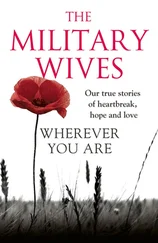ROB: Where is it first, before you tell me what it's like.
Mary Jane: It's shining intensely on his head and illuminating the casket that he's lying in.
ROB: You're generalizing now. OK, a spot of light comes from where to where? It falls from point A to point B, and in point B what do you see in full detail? Give me that in a few sentences.
Mary Jane: Where it falls from?
ROB: I just want you to see it and tell me what you see, because there is a sense of that light moving from a place to a place, isn't there? The source of light is one place — I want your eyes to go first to the bright light above, and then follow it and see something.
Mary Jane: On his face. His face is an odd ash gray color and the shape of his face is not. there's a twist to his jaw and his mouth that doesn't look anything like him.
ROB: You've analyzed the twist of his jaw. Let me see the twist of his jaw right now.
Mary Jane: The twist of his jaw, his mouth, it looks as if someone had cupped their hand around his jaw and pushed up.
ROB: OK. I want you to have a flash of memory in this moment. You see that face flash to something, some memory of that face.
Mary Jane: Well, in the moment that he died, his jaw fell open.
ROB: OK, you've just summarized that. Go from a specific, in-the-moment, concrete, sensual encounter with the face before you in the funeral home to a specific in-the-moment encounter with that other moment. I know this is tough stuff. It's tough for you personally, and the sense impressions we're getting at are very challenging in themselves, but so are they always, when you do them right. So let's back up: clear your consciousness. One more time, evoke the face in the funeral home, and then evoke the face that you saw in the moments before his death. Don't try to remember what you said; I want you to see it afresh and just be there with it. I want to get both faces from you in the same flow.
Mary Jane: His chin and his lips and his nose looked as if someone had grabbed ahold and shoved them into a mask. The face that I remember from the moment of his death is soft.
ROB: Soft where?
Mary Jane: The chin was elastic. There was still mobility..
ROB: You're analyzing and generalizing here. Let's just look at something on his face. Let's look into his eyes before he dies; look into his eyes.
Mary Jane: His eyes are almost completely closed. There's some movement in the lids, a little water.
ROB: Look at his mouth. What's his mouth doing?
Mary Jane: His mouth is partially open.
ROB: Partially, what does that mean?
Mary Jane: Half open.
ROB: Do you see his teeth, his tongue? What do you see?
Mary Jane: You see his tongue. You see his lower teeth.
ROB: What are they like?
Mary Jane: They're yellow.
ROB: Yellow like what?
Mary Jane: Like old piano keys.
ROB: What do you smell?
Mary Jane: Room freshener.
ROB: OK, but what's that smell?
Mary Jane: Flowery.
ROB: Flowery, like what?
Mary Jane: Flowery, like jasmine. In bloom.
ROB: I can't buy that one. It's trying to smell like jasmine in bloom. What's it really smell like?
Mary Jane: Actually, the flowery jasmine room freshener is not doing a very good job of covering up.
ROB: You don't have to analyze it. There is that smell but layered under it is.
Mary Jane: The smell of old sweat and intense concentrated urine smell.
ROB: All right, that's fine. Thank you, Mary Jane.
It's tough. When you focus on this detail and that— his mouth, a smell. We had some nice things there. It's easy to get spooked doing this; very quickly you become conscious of how difficult and demanding it is, and then often your response to that stress is to start forcing it, willing it. The voice in your head that I talked about a few weeks ago starts going, "Oh, that's not good enough. This isn't working, is it? Better turn it up a notch." And then it falls apart.
But look, it's this way for everybody. Janet and I struggle with the same things every day. We fight off those impulses to will this, to analyze and describe it with technique. We get the same kind of panicky feeling when it's not quite there. You just have to learn to let it go, to stay loose with it.
Even if we're not fighting off serious emotion, this is still tough, isn't it? Just moving through space in the moment is very tough, it really is — but necessary, as I hope you're convinced. All right, Brandy, do you want to do it? Let's put you on the seesaw. Things are going OK. Let's do an up and down. Can we do that in the moment?
Brandy: The air is hot against the back of my neck as it blows my hair up as I go down.
ROB: You're at the top. Let's do a slow motion, and you're about to go down. Let's start you there. Put us on that seat of the seesaw with you and bring us down. So, you are sitting where?
Brandy: My legs are straight out in front of me. The seat is hard wood, the paint is slick, so at the top I'm almost sliding forward.
ROB: Where do you feel that?
Brandy: On the back of my thighs the paint chips dig in a little bit. And on the sides I can feel the handle that I'm also grabbing onto.
ROB: Let's put your hands on the handle. What does that feel like?
Brandy: It's hot metal, worn smooth on top.
ROB: Glance off — where are you looking? What do you
see?
Brandy: Trees to my right.
ROB: You just summarized that for me. See the tree. I turn my eyes to the right and. what've you got?
Brandy: The leaves are brown and crusty, but it's still pretty full, and I can't see all the branches.
ROB: That's what you can't see. I don't have a shape yet to that tree. You're a little girl. You're on a seesaw. You're up high, and when you go up high you love to let your gaze travel out to the world from a height that you're rarely at. And there's a tree. So let me see the tree through your eyes.
Brandy: The first thing I see is the leaves.
ROB: You just generalized that for me. I doubt if the first thing you see is the leaves unless the tree is at arm's length. What kind of tree is it?
Brandy: It's an oak tree.
ROB: Yes, oak tree's good; that's a concrete detail. What is the configuration of the great branches on this oak tree? An oak tree doesn't grab you first by its leaves, does it?
Brandy: Knobby branches?
ROB: You saw this wonderful tree and you want to tell me about this tree. I think you're just a little bit spooked now. It's really simple. Just think of the most beautiful, wonderful oak tree you've ever seen and let that be growing off to your right when you're at the height of this seesaw. You've just lifted and your thighs are prickled by the paint chips and your hands are warmed by the metal handle that you're grasping tightly and you lift your face and turn your eyes and what do you see? [Silence.] OK, let the tree go. Look down the seesaw at your brother. Let me see your brother through your eyes as you're at the apogee of your seesawing.
Brandy: He has tight brown curls of hair, his mouth is
open.
ROB: How so?
Brandy: Like he's going to scream or yell. It's like he's taking a big breath.
ROB: What's in his eyes? What are his eyes like?
Brandy: They're brown and very wide-open. He looks very excited.
ROB: "Excited" is an abstraction. But OK. He's just flexed his legs, he's pushed off, and you begin to fall. Tell me what you feel.
Brandy: My stomach jumps to my throat. I feel kind of like I'm lifted off the seat for a minute.
ROB: It's like you're lifted off the seat for a minute— that's kind of generalized. Let's feel that sensation with you. In fact you are lifted off, aren't you? And how do you feel that letting go? Where in your body do you feel the lift.
Brandy: My legs kind of unstick. ROB: Good, OK.
Читать дальше

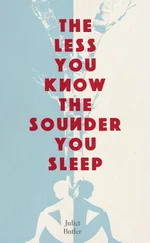
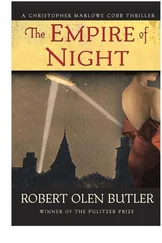

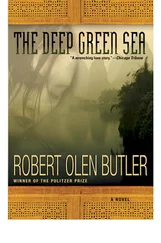
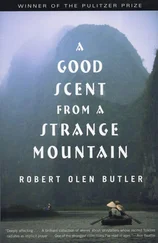
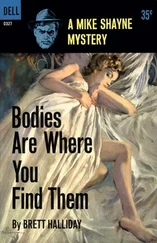
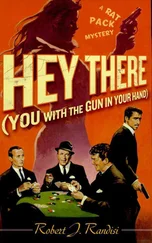

![Theresa Cheung - The Dream Dictionary from A to Z [Revised edition] - The Ultimate A–Z to Interpret the Secrets of Your Dreams](/books/692092/theresa-cheung-the-dream-dictionary-from-a-to-z-r-thumb.webp)


